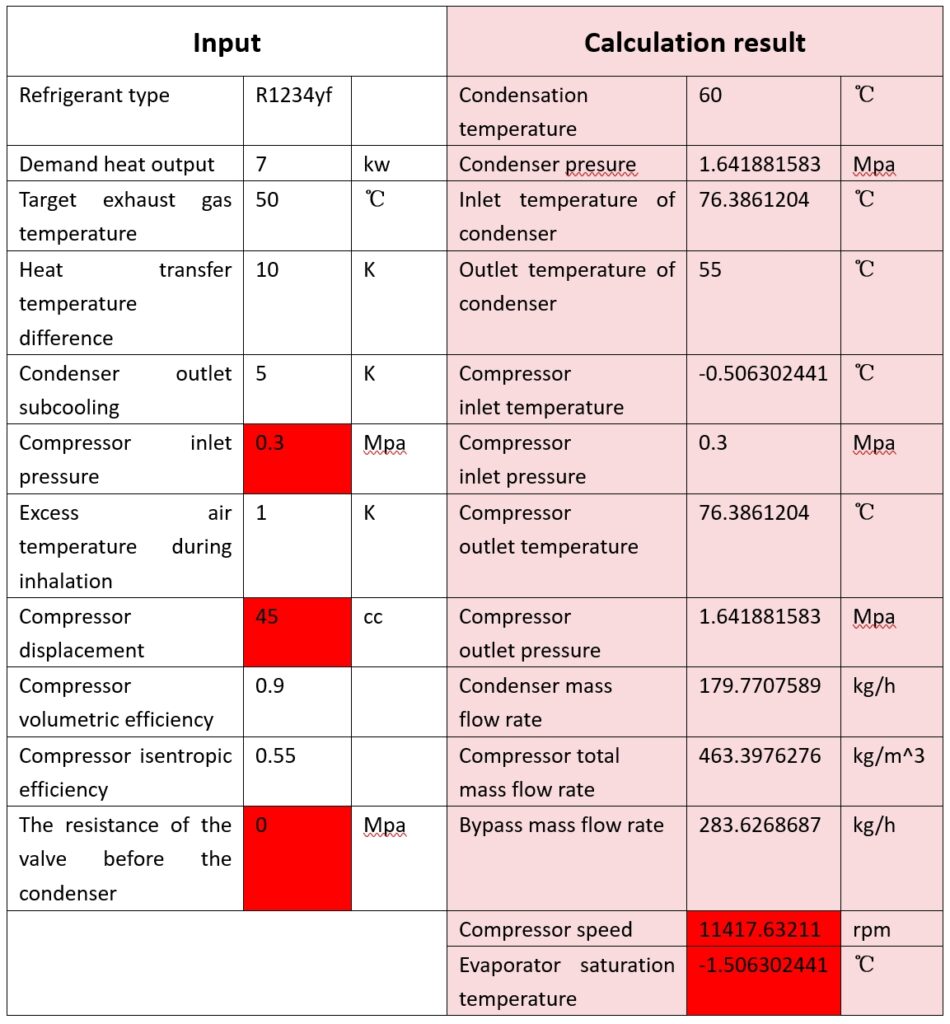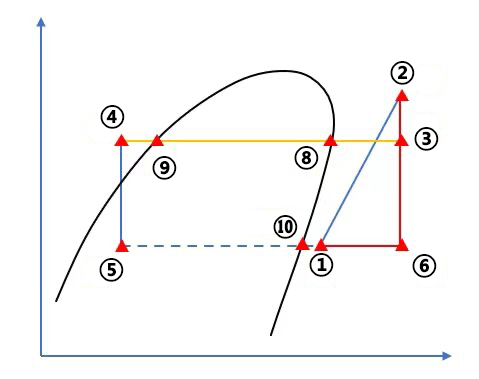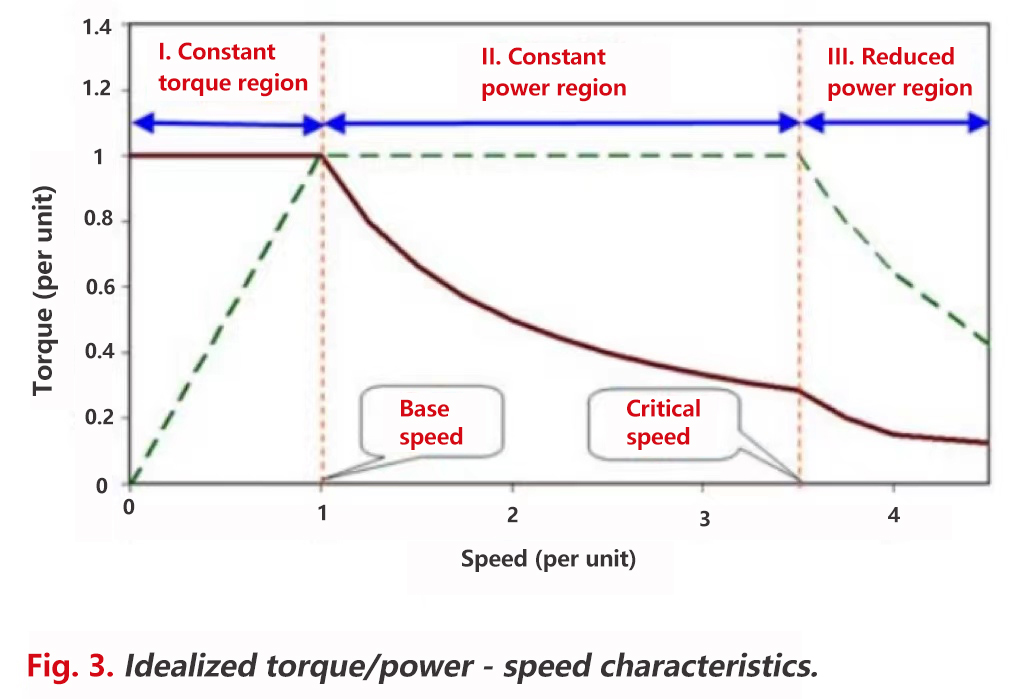Tesla’s replacement of PTC heaters with hot gas bypass functionality in the Model Y introduces a novel application scenario for compressors. Under this new operational framework, this paper conducts a quantitative analysis to identify the specific engineering challenges that compressors must address.
System state calculation


To quantify the impact on the compressor, let’s first look at two sets of calculation data as follows:
Simplified diagram of the system architecture:

The pressure enthalpy diagram is as follows:

The pressure drop between points 2 and 3 is controlled by the refrigerant valve upstream of the condenser.
Analysis of the Working status of the compressor
Increased displacement or higher RPM
In the hot air bypass mode, to ensure the heating capacity, the ratio of the mass flow rate demand at the hot end to the bypass flow rate increases the total mass flow rate demand. The above calculation uses a 45cc displacement compressor and assumes a volumetric efficiency of 0.9. To achieve 7kw cabin heating, it still needs to run at over 9,000 to 10,000 revolutions. If a 34cc compressor is used, it is basically impossible to meet the heating capacity demand.
Of course, reducing the isentropic efficiency can lower the speed requirement of the compressor. However, the design of compressors generally takes improving the isentropic efficiency as an implicit design criterion. Actively reducing the isentropic efficiency is contrary to common sense and will lead to an increase in power consumption and a decrease in COP in common refrigeration and heat pump operating conditions, which is not advisable.
On the other hand, to increase the mass flow rate and reduce the compressor speed, the inlet pressure of the compressor rises, which means that the saturation temperature of the Chiller increases. This may cause heat release in the waterway, further increasing the load on the refrigerant system, raising the total heat demand of the compressor, and thereby further increasing the displacement demand.
Inhalation carrying liquid
In hot gas bypass mode, precise control of bypass and condenser valves is critical to maintaining proper suction superheat. However, achieving this balance is extremely challenging, potentially forcing the compressor to operate with liquid refrigerant at the suction port long-term, demanding higher durability and reliability.
High RPM and torque demands
To ensure the compressor operates within the allowable speed range, the inlet pressure of the compressor is raised, and the outlet pressure needs to be increased through the valve before the condenser, which leads to an increase in the torque demand of the compressor. Coupled with the high speed, this means that the driving capacity of the compressor motor may need to be enhanced, especially when the heating demand increases to a level higher than 7kw. Under the above calculated conditions, the inlet temperature of the compressor may need to be further raised to provide sufficient heating capacity within the maximum speed range of the compressor.
Generally, the torque and power characteristics of the motor are as shown in the figure. When the speed reaches a certain range, the motor enters the weak magnetic zone and is limited by the counter electromotive force and cannot provide sufficient torque. Usually, to control the overall cost of the compressor, weak magnetic control is used for the compressor motor and the electronic control unit. Therefore, the torque required under the above thermodynamic calculation conditions may not be provided by the existing compressor.

Increasing motor power would require upgrading the motor controller’s output capability, potentially hitting IGBT current-handling limits.
The influence of oil
As noted in Tesla’s patents, COP data indicate that the compressor switches between heat pump and hot gas bypass cycles in low temperatures, causing suction conditions to alternate between low-temperature/low-pressure and moderate-temperature/mid-pressure states.

The following is a curve of the mutual compatibility characteristics of oil and refrigerant extracted from a River Chemical report. When the temperature is extremely low, the compressor oil will leach out. Therefore, in the heat pump mode, the oil in the evaporator precipitates out and has a high viscosity, which cannot be smoothly returned to the compressor. Switching to the hot gas bypass requires the compressor to run at high speed, and the oil return from the compressor may cause problems. The oil quality of the compressor may need to be re-optimized and modified to meet the low-temperature characteristics.

Of course, based on the actual test results and in combination with the following original text in Tesla’s patent, Tesla may have already made some evasive measures in its overall vehicle control strategy. It first made the compressor oil circulate as much as possible before truly starting to use the hot gas bypass mode to heat the passenger cabin.

According to the observation of the market situation, currently only Tesla is using the hot gas bypass function to provide heating, and the suppliers of the compressors used in this function are limited, with only Denso and Sanyo Electric being the two companies. The Hanon compressors used in Tesla’s first-generation products were not continued to be adopted. There might be multiple reasons behind this, or it could be that Hanon failed to solve more engineering and technical challenges. The author’s analysis in this article is based solely on his own speculation and he has no actual experience in conducting experiments on projects. Colleagues are welcome to supplement and provide more evidence.


Active Community Global, Inc (ACG EVENTS Global) is a leader in conference planning and production. We produce world-class conferences like summits, technical forums, awards ceremony, company visiting and so on, focusing on areas of most relevance to our served industry sectors. We are dedicated to deliver high-quality, informative and value added strategic business conferences where audience members, speakers, and sponsors can transform their business, develop key industry contacts and walk away with new resources.